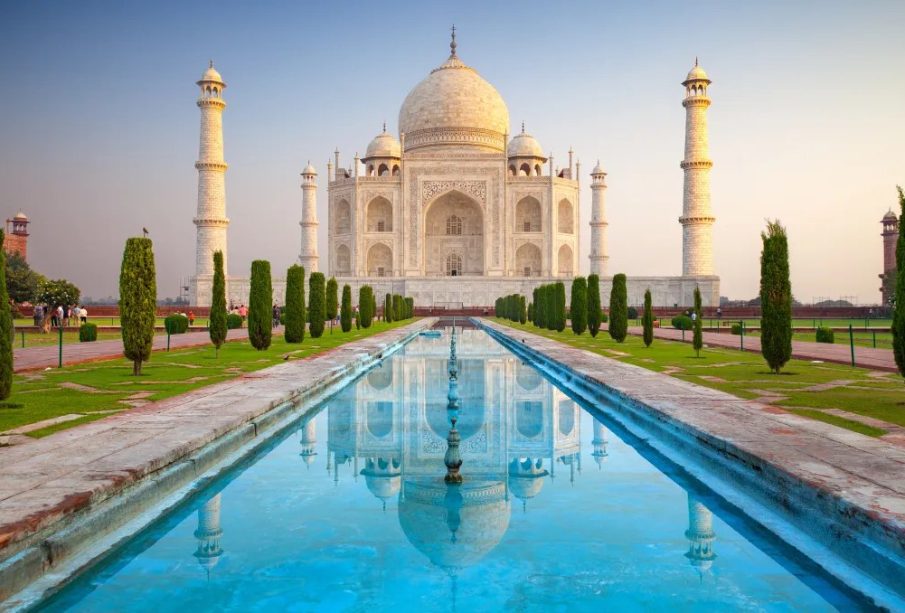The Taj Mahal: India’s Architectural Marvel and Symbol of Love

Introduction
The Taj Mahal, located in Agra, India, is an enduring symbol of love and a masterpiece of Mughal architecture. Built-in the mid-17th century by Mughal Emperor Shah Jahan in memory of his beloved wife Mumtaz Mahal, it is not only a UNESCO World Heritage site but also one of the New Seven Wonders of the World. Its intricate design and historical significance make it a crucial attraction for millions of visitors each year.
Historical Context
The Taj Mahal was commissioned in 1632, shortly after the death of Mumtaz Mahal during childbirth. This monumental structure took approximately 22 years to complete, with thousands of artisans and craftsmen from across the Indian subcontinent and beyond contributing to its construction. The mausoleum is a stunning example of Indo-Islamic architecture, blending Persian, Ottoman Turkish, and Indian styles.
Architectural Features
The Taj Mahal is renowned for its stunning white marble façade, which reflects different shades and hues throughout the day. Its iconic dome rises majestically, flanked by four minarets that enhance its grandeur. The intricate inlay work featuring semi-precious stones, floral patterns, and calligraphy enhances its beauty, and the surrounding gardens offer a serene and harmonious landscape.
Recent Developments and Conservation Efforts
In recent years, the Taj Mahal has faced challenges including pollution and conservation issues, threatening its pristine condition. The Indian government has initiated several measures to protect and restore this historical monument. This includes a strict pollution control mechanism around the site and ongoing restoration projects aimed at preserving its architectural integrity. In 2022, renovations included cleaning the marble façade and restoring the gardens, demonstrating a commitment to maintaining this cultural treasure for future generations.
Visitor Experience and Significance
Visiting the Taj Mahal is often described as a transformative experience, with tourists traveling from all over the world to witness its beauty. The site attracts around 7 to 8 million visitors annually, contributing significantly to Agra’s economy. As a UNESCO World Heritage site, it plays a vital role in promoting cultural heritage and tourism in India. The Taj Mahal’s legacy as a monument of love resonates not only historically but also personally for many who visit.
Conclusion
The Taj Mahal remains an important symbol of love and architectural excellence. As restoration efforts continue, its preservation reflects India’s dedication to maintaining its historical sites. Tourists and lovers of history will undoubtedly continue to cherish and celebrate this iconic masterpiece for generations to come.








